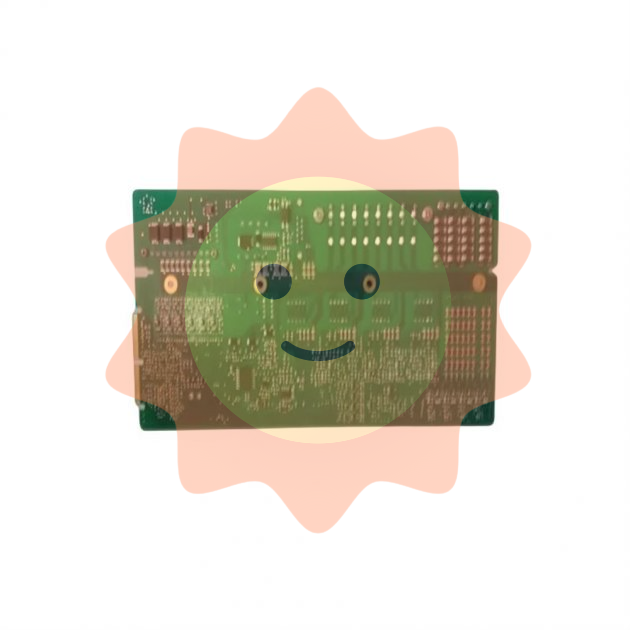Paper industry information
one. Pulp can be divided into wood pulp, waste pulp and non-wood pulp (bamboo, grass) according to the source of raw materials. Among them, wood pulp is mostly used to produce cultural paper, household paper and special paper, waste pulp is used to produce packaging paper, and the proportion of non-wood pulp is small, participating in the production of some household paper
1. Raw wood pulp
The upstream of the pulp is the forest, with tropical, subtropical and temperate broadleaf forest as the raw material of the product called broadleaf pulp (hardwood pulp), with temperate and cold coniferous forest as the raw material of the product called coniferous pulp (softwood pulp), because it involves bleaching, so sometimes also called drift width, drift needle.
Conifer leaves are pointed, also called softwood, such as deciduous, spruce, masson pine, red pine. Conifers are mostly found in middle and high latitudes, such as Europe, Russia, Siberia, and the United States. Conifer has a long growth cycle (15-25 years), its fiber is long and fine, pure and less impurities, the production of paper toughness, high folding resistance, good printability.
Broad-leaved trees have a hard texture, called hardwood, such as eucalyptus, birch, poplar, basswood, maple. It is mostly grown in middle and low latitudes, such as Brazil and Chile, and has a short growth cycle (3-6 years). Broad-leaved forests grow faster, so the fibers are shorter and the lignin content is lower
Several major forest production areas in the world, one is South America and North America. Brazil in South America and the United States and Canada in North America are all paper and pulp giants. The second is Northern Europe. Such as Finland and Sweden are also very developed paper industry, giant companies. Third, Southeast Asia. Mainly broad-leaved forest. Indonesia's Golden is a giant. Vietnam and Laos also have very good forest resources. The sun takes its place over Laos. Fourth, Africa. Africa's forest resources are mainly broad-leaved forests, which are rich and mouth-watering. The fifth is Russia. Forest resources accounted for more than one fifth of the time, coniferous forest in the majority, broadleaf forest is also very good. Only Africa and Russia do not produce paper giants in the five regions, and Africa has failed to live up to its resources because of political instability. Russia because the resources are mainly in Siberia and the Far East, the vast area is sparsely populated.

The difference between broadleaf pulp and coniferous pulp can be likened to cotton and chemical fiber, in addition to comfort, toughness, durability, smoothness are the advantages of coniferous pulp. Unlike cotton, which is more expensive than chemical fiber, broadleaf pulp has the advantage of being cheaper than coniferous pulp. Therefore, in practical applications, broadleaf pulp is often "blended" with coniferous pulp. Such as coated paper (books), white cardstock (invitations, greeting cards) such as the quality of cultural paper, the content of coniferous pulp will be relatively high, such as toilet paper, the content of coniferous pulp will be much lower, more play the role of "skeleton support", not to scratch a ground.
At present, the main commercial pulp traded in the world is needle and broadleaf bleached sulfate pulp, and China mainly imports such pulp. We usually divide bleached kraft pulp into five categories, namely, northern bleached softwood pulp, hardwood kraft pulp, southern bleached softwood pulp, hardwood kraft pulp and bleached eucalyptus kraft pulp. Our country imports from Canada, the United States, Russia, Finland, Sweden, Indonesia, Brazil and other countries, pulp is different, the nature is not the same.
2. Waste pulp
Waste paper is divided into national waste and foreign waste. There are some differences in quality between domestic waste paper and imported waste paper. Developed countries such as Europe, America and Japan have relatively complete waste paper recycling classification system, and the recovered waste paper is of high quality after treatment, and large-scale recycling effectively reduces production costs. In contrast, the recycling classification of domestic waste paper is relatively backward, the recycling system is scattered, and the overall quality of waste paper is low.
Compared with domestic waste paper, the biggest advantage of waste paper in the United States is its high fiber quality and can replace wood pulp.
At present, there are two main types of waste pulp imported into China, one is pulp board (including wet pulp, loose pulp, etc.), such products are mainly from Taiwan, Southeast Asian countries, products with high water content and short transportation distance, mainly by Liwen, Rongcheng, Sun, Nine Dragons and other large factories in foreign countries directly or jointly produced, imported after their own use.
The other is the roll pulp, mainly from North America, Southeast Asia, South Asia and other countries, such products are similar to finished paper (often called garbled paper, junk paper, etc.), can be used as paper, can also be used as pulp, long transportation distance, low water content. However, this part of the product is often the object of customs inspection because of the paper, and customs duties are often levied on finished paper when entering the customs.
Whether it is coniferous pulp, or broadleaf pulp, the use is much lower than waste pulp. The recovery rate of foreign waste pulp is about 60-70% for a long time, and the recycling cycle of paper is relatively short, so the output of waste pulp is very large, but because of the "mixed" and difficult to deal with impurities, waste pulp is more made into corrugated paper and cardboard, and then folded into a variety of cartons, cartons, the largest downstream user is e-commerce express.

3. Non-wood pulp
Bamboo pulp: Bamboo is a perennial tufted plant, bamboo forest formation period is generally 3 years. Bamboo is closer to wood in material quality, and the content of silicon in bamboo is lower than other non-wood pulp raw materials. Because of the particularity of bamboo clustering, thinning can only be used for cutting. Due to the particularity of bamboo clusters, thinning must be used when harvesting, and the demand for labor is greater than that of wood and bagasse. With the continuous increase of labor costs, it will greatly affect the cost of bamboo raw materials.
The full resource value of bamboo is realized through the supply of bamboo shoots and bamboos. Generally speaking, for the same bamboo forest or bamboo species, increasing the yield of bamboo shoots will reduce the yield of bamboo, and vice versa. Bamboo shoots are more profitable than bamboo shoots, but also require more labor and care, and the production of bamboo is relatively less manual input.
From the type of bamboo, although the material of bamboo is very suitable for pulping and papermaking, but because of its wide use in industry, construction, furniture, crafts and other aspects, it is rarely used for pulping and papermaking due to price factors. Representative listed companies: Yibin Paper, Qingshan Paper
Reed: There are two main kinds of reed in China, namely reed and silver reed. The Yangtze River basin and its south are mainly reeds, the Yellow River basin and its north are mainly reeds, and the areas between the south of the Yellow River and the north of the Yangtze River are both reeds and reeds. The main uses of reed are reed handicraft products, animal feed, construction materials and fiber raw materials for pulp and paper. Among them, pulping and papermaking is the most important use of reed. Reeds are perennial plants, and winter is the harvest season every year, and the water content of reeds is the lowest season. Reed in non-wood pulping fiber raw materials, in terms of quality is second only to bamboo, its silicon content is higher than bamboo, but generally lower than bagasse and wheat grass and other agricultural straw. Compared with bamboo, the economic benefits of other uses of bamboo are more obvious, and the use of reed papermaking is very competitive.
The absolute dry solid content of fiber in sugarcane is about the same as the sugar content in sugarcane. Most of the sugar is sent to the sugar mills for the production of sucrose. Therefore, the annual yield of bagasse is basically equivalent to the annual yield of sucrose. Generally speaking, bagasse contains a certain amount of cane pulp, which should be removed before pulping, and the general pulp removal rate is 15%, which can be inferred that every 1 ton of cane sugar will produce 850 kilograms of bagasse for pulping and paper making. In addition to the use of bagasse for pulp and paper, there is a very small amount of high density fiberboard and furniture or decorative board. Guangxi, Yunnan and Guangdong are the main producing areas of sugarcane.
Wheatgrass: Grass fiber raw materials refer to a wide range of wheat, rice, corn and cotton straw, which is a waste of agricultural production. Grass fiber raw materials have high silicon content and serious pollution.
two. Classified by preparation method
Wood pulp is the main fiber source for paper making, usually made from wood chips by chemical or mechanical methods to remove the lignin from the wood and retain the cellulose and hemicellulose. According to the manufacturing method, it is divided into chemical pulp (including caustic soda pulp, sulfate pulp, sulfite pulp, etc.), mechanical pulp (including grinding stone wood pulp, disk mill mechanical pulp, hot mill mechanical pulp, etc.) and chemical mechanical pulp 3 categories; Pulp mills usually dry fiber suspension made from wood to form pulp plates for easy transportation. Paper mills in the papermaking process need to add water to dissociate the pulp plate in order to be used in production.

Chemical-mechanical wood pulp is a kind of wood pulp with high yield, and the yield can reach more than 90%. The production of one ton of chemical pulp requires about 1.1-1.2 tons of absolutely dry wood chips, and the production of 1 ton of chemical pulp requires about 2.1 tons of wood chips
chemi-mechanical pulp (CMP) includes:
A chemi-thermo-mechanical pulp CTMP;
B chemi-mechanical pulp CMP;
The chemical treatment conditions are mild, the pulp retains more lignin content in the raw material, and the pure pulp yield can be as high as 85% ~ 90%. The chemical mechanical pulp made of broadleaf wood is similar to that of softwood grinding wood pulp, with high paper compactness, low opacity, more long fiber content, less fiber bundle and good printability. It can be used to make newsprint, printing paper and cardboard. [1-2]
1, the pulping process in paper manufacturing: there is no obvious boundary between ordinary chemical mechanical pulp and chemical thermal grinding mechanical pulp, and the process is also very similar. Both CMP and CTMP chemicals used to treat wood chips are sodium sulfite, caustic soda - sodium sulfite, caustic soda. General coniferous wood with sodium sulfite (or add a small amount of caustic soda), broadleaf wood with caustic soda (add a small amount of sodium sulfite). The main factors affecting pulp quality are wood type, wood chip quality, grinding concentration, pre-steaming conditions, chemical impregnation conditions, grinding pressure, disk mill structure, disk mill revolution and so on.
2, ordinary chemical mechanical pulp (CMP) raw wood chips subjected to stronger chemical treatment, pulp rate is low, grinding can be carried out under normal pressure. Generally, the chemical treatment conditions of softwood are 12~17% sodium sulfite concentration in the cooking liquid, 10~60 minutes preheating at 130~170℃, and the wood chips after cooking are extrude the excess pharmaceutical liquid for two stages of grinding, and there is a permanent washing device between the two stages of grinding. Broad-leaved wood was treated with 15-20% sodium sulfite cooking solution at 150-160 ℃ for 15-40 minutes, and the CMP yield was 86-88%.
3, chemical heat grinding mechanical pulp (CTMP) wood chips in the grinding before the chemical treatment, the purpose is to soften the wood on the basis of retaining the same wood composition as much as possible, so that the fiber becomes soft, improve the binding force between the fibers, so the composition of the long fiber is significantly higher than CMP, change the optical properties of the paper, improve the strength of the paper. The pre-steaming temperature of wood chips was 125~130℃, 2~3 minutes, and the dosage of sodium sulfite was 2~3%. The amount of sodium sulfite in broadleaf wood was 3-4%, sodium hydroxide was 2-3%, and CTMP yield was 90-92%.
4, the recycling of cooking waste liquid: cooking liquid contains a lot of lignin sulfonate, sugar and its degradation products, inorganic substances, etc., with a high BDO, COD, good recovery, utilization is an important environmental protection topic of neutral sulfite pulp industry.
Three. Dissolving pulp
A high-purity chemical pulp, also known as wood pulp, chemical fiber pulp, the main raw materials for masson pine, eucalyptus wood and other high-quality wood fiber. Dissolving pulp is a repurified product of wood pulp used in papermaking, which has strong flexibility in capacity switching. From the process point of view, the production process of dissolved pulp and pulp is very similar, both using wood chips as raw materials, the equipment has a certain degree of commonality, the fiber concentration of pulp is about 65%, the subsequent increase of pre-hydrolysis treatment, when the cellulose content reaches more than 90%, that is, dissolved pulp, mainly to remove the hemicellulose in the pulp, and finally only the whole fiber is retained. The main use of dissolved pulp is to produce viscose fiber, viscose fiber is similar to cotton in texture, comfort, air permeability, environmental protection and other aspects of polyester have obvious advantages, so dissolved pulp has become a substitute for cotton, commonly known as "artificial cotton".

Asia is the world's largest dissolving pulp production area, mainly in Indonesia, Laos and other areas with rich forest resources; Followed by the Americas, focusing on the United States, Canada, Brazil and other places, the Americas and Asia accounted for nearly 80% in 2021
The price of dissolved pulp has a strong correlation with wood pulp, cotton and viscose staple fiber. Wood pulp is the raw material of dissolved pulp, which can be produced and converted, so the price trend of dissolved pulp is basically the same as that of broadleaf pulp and coniferous pulp. Both dissolved pulp and cotton pulp made from cotton are raw materials of viscose staple fiber, which is a good substitute for cotton. When the price of cotton rises, the demand for viscose staple fiber as a substitute increases, resulting in an increase in the demand for dissolved pulp and an increase in the price.
The supply side of dissolved pulp in China is highly dependent on imports. Wood chip is the main raw material of dissolved pulp, but due to the relatively small forest resources in China, it can not meet the needs of the growing pulp and paper industry, and the consumption of wood chip tons of dissolved pulp is high, affected by environmental protection policies, China's dissolved pulp import dependence is high. According to Zhuo Chuang information, at present, only Sun Paper and Hunan Juntai produce dissolved pulp. Southeast Asia has the advantages of sufficient supply, cost competitiveness and convenient transportation, and the proportion of imports is among the top. Dissolved pulp imports increased from 2.84 million tons in 2018 to 3.35 million tons in 2022.
Four. Viscose fibre
Viscose fiber, also known as ice silk, silk cotton, model, is a kind of artificial fiber, natural plant fiber (cotton, wood, bamboo, etc.) as raw materials, through alkalization, aging, sulfonation and other processes to make soluble cellulose xanthan ester, then dissolved in dilute lye to make viscose, made by wet spinning. This fiber is skin-friendly and non-irritating, has excellent moisture absorption and breathability, and is known as "breathable fabric".
- EMERSON
- Honeywell
- CTI
- Rolls-Royce
- General Electric
- Woodward
- Yaskawa
- xYCOM
- Motorola
- Siemens
- Rockwell
- ABB
- B&R
- HIMA
- Construction site
- electricity
- Automobile market
- PLC
- DCS
- Motor drivers
- VSD
- Implications
- cement
- CO2
- CEM
- methane
- Artificial intelligence
- Titanic
- Solar energy
- Hydrogen fuel cell
- Hydrogen and fuel cells
- Hydrogen and oxygen fuel cells
- tyre
- Chemical fiber
- dynamo
- corpuscle
- Pulp and paper
- printing
- fossil
- FANUC
- Food and beverage
- Life science
- Sewage treatment
- Personal care
- electricity
- boats
- infrastructure
- Automobile industry
- metallurgy
- Nuclear power generation
- Geothermal power generation
- Water and wastewater
- Infrastructure construction
- Mine hazard
- steel
- papermaking
- Natural gas industry
- Infrastructure construction
- Power and energy
- Rubber and plastic
- Renewable energy
- pharmacy
- mining
- Plastic industry
- Schneider
- Kongsberg
- NI
- Wind energy
- International petroleum
- International new energy network
- gas
- WATLOW
- ProSoft
- SEW
- wind
- ADVANCED
- Reliance
- YOKOGAWA
- TRICONEX
- FOXBORO
- METSO
- MAN
- Advantest
- ADVANCED
- ALSTOM
- Control Wave
- AB
- AMAT
- STUDER
- KONGSBERG
- MOTOROLA
- DANAHER MOTION
- Bently
- Galil
- EATON
- MOLEX
- Triconex
- DEIF
- B&W
- ZYGO
- Aerotech
- DANFOSS
- KOLLMORGEN
- Beijer
- Endress+Hauser
- MOOG
- KB
- Moxa
- Rexroth


Email:wang@kongjiangauto.com

























































































































